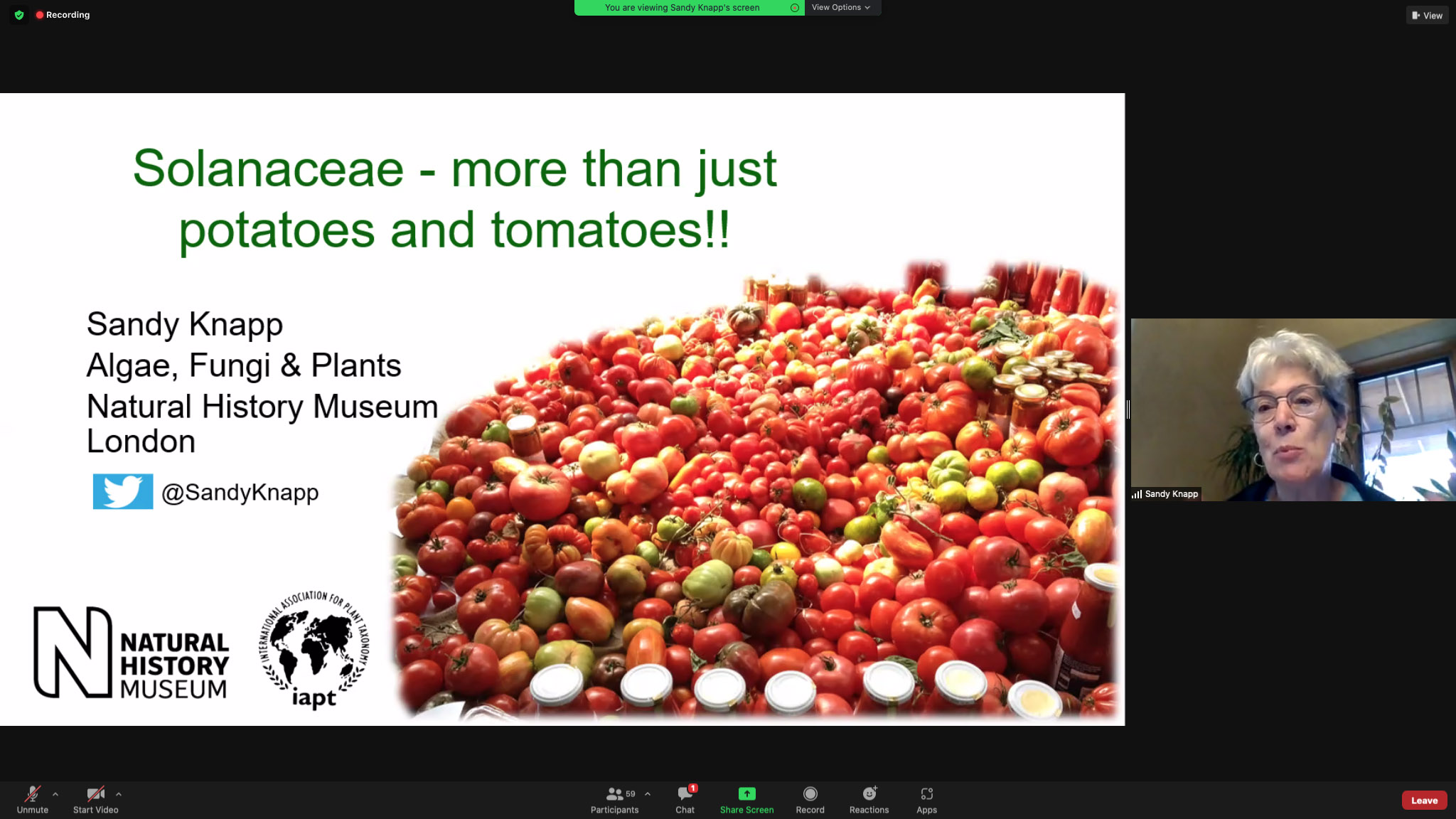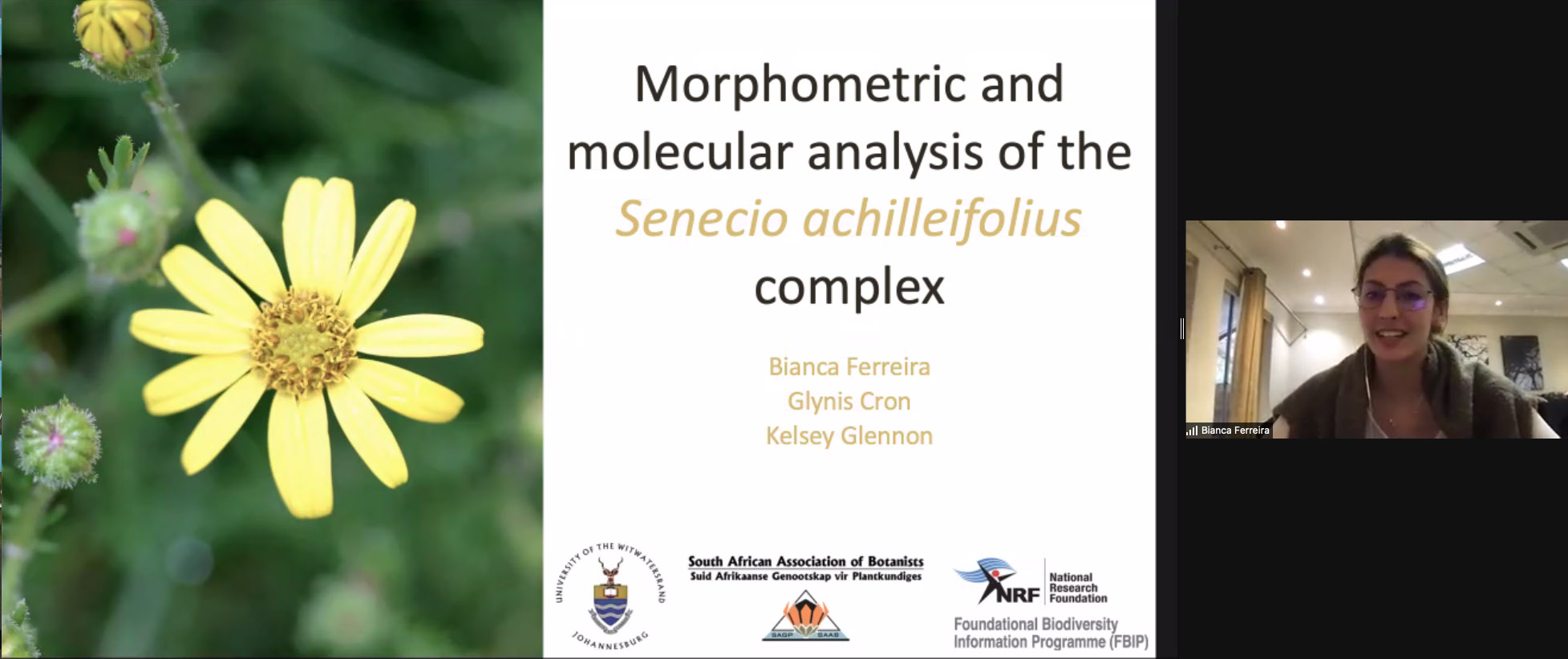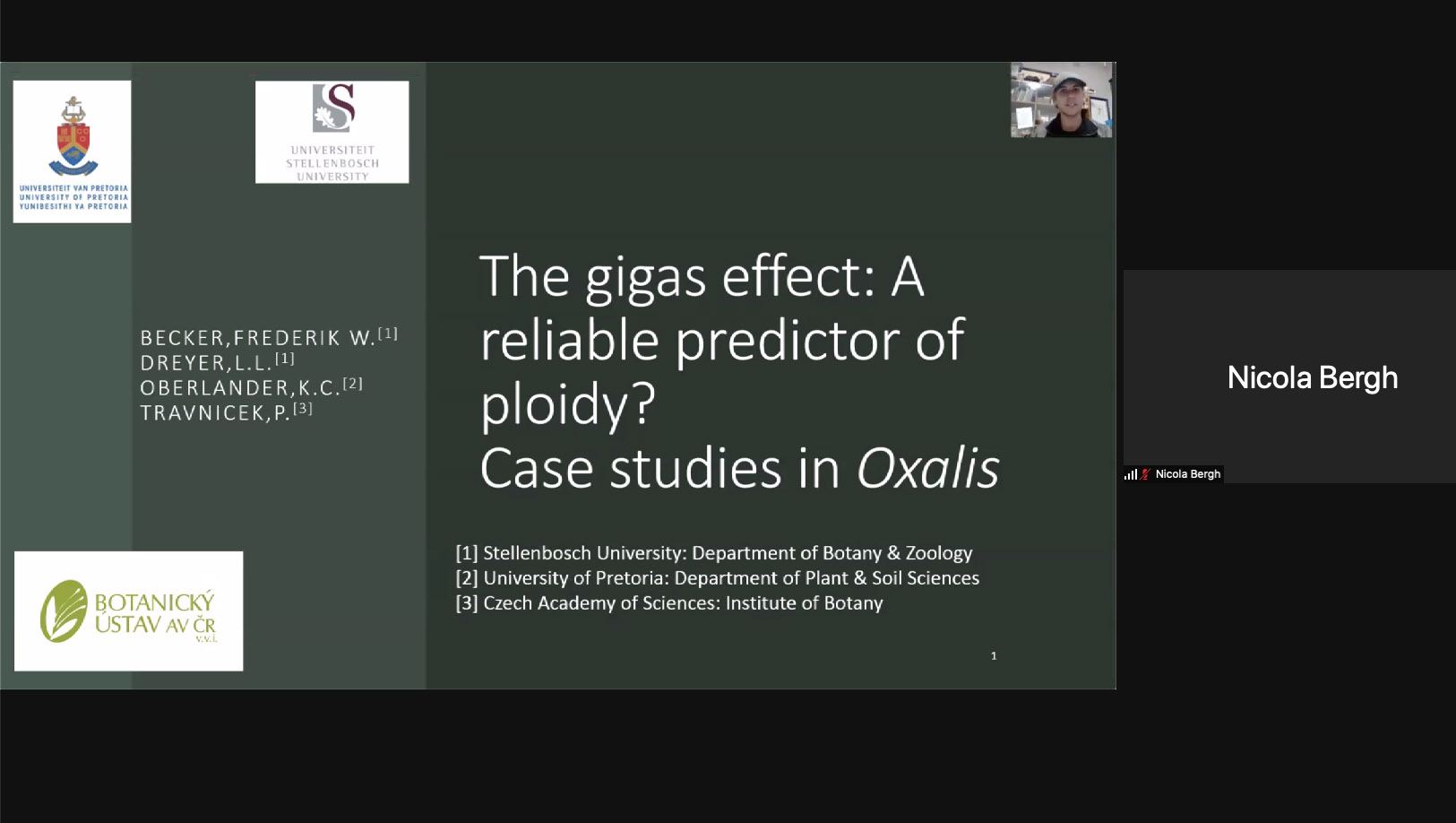The Solanaceae family unpacked at the August SASSB webinar 2021-08-23
‘Solanaceae - more than potatoes and tomatoes!’ was the topic of the plenary speaker Dr Sandra Knapp of the Natural History Museum in London at the August Southern African Society for Systematic Biology (SASSB) webinar on 5 August. The two student presentations were by Bianca Ferreira from the University of the Witwatersrand “Morphometric and molecular analysis of the Senecio achilleifolius complex (Senecioneae, Asteraceae) in South Africa,” and Frederik Becker from the Stellenbosch University’s Botanical Gardens “The gigas effect: A reliable predictor of ploidy? Case studies in Oxalis”.
Dr Knapp was welcomed by Prof. Muthama Muasya, a Botanist from the University of Cape Town, describing her as one of the world’s leading female scientists but also inspired him as a taxonomist.
The Solanaceae family is the source of many food and medicinal products used by people globally - way more than just the origin of chips and tomato sauce. The Solanaceae is not a big family, consisting of only some 4,000 species in 103 genera but understanding the potential utility of these species, both taxonomy and phylogenetics are vitally important. Sandra’s talk focused on the megadiverse genus Solanum. With more than 1,200 species and distributed worldwide, Solanum is most diverse in the Neotropics, but recent work has shown that diversification is fastest in Africa and Australia, counter to expectations. Africa has also been crucial in the evolution of several crops - some globally, some locally important. Her presentation explored the nexus between taxonomy and phylogeny in Solanum, and suggested areas for further research into both that will aid our understanding of the biology and conservation of these plants, both ex situ and in their native ranges.
Dr Sandra Knapp is a botanist who is a specialist on the taxonomy and evolution of the nightshade family, Solanaceae. She is also the author of several popular books on the history of science and botanical exploration, including the award-winning Potted Histories (2004), and more than 200 peer-reviewed scientific papers.





